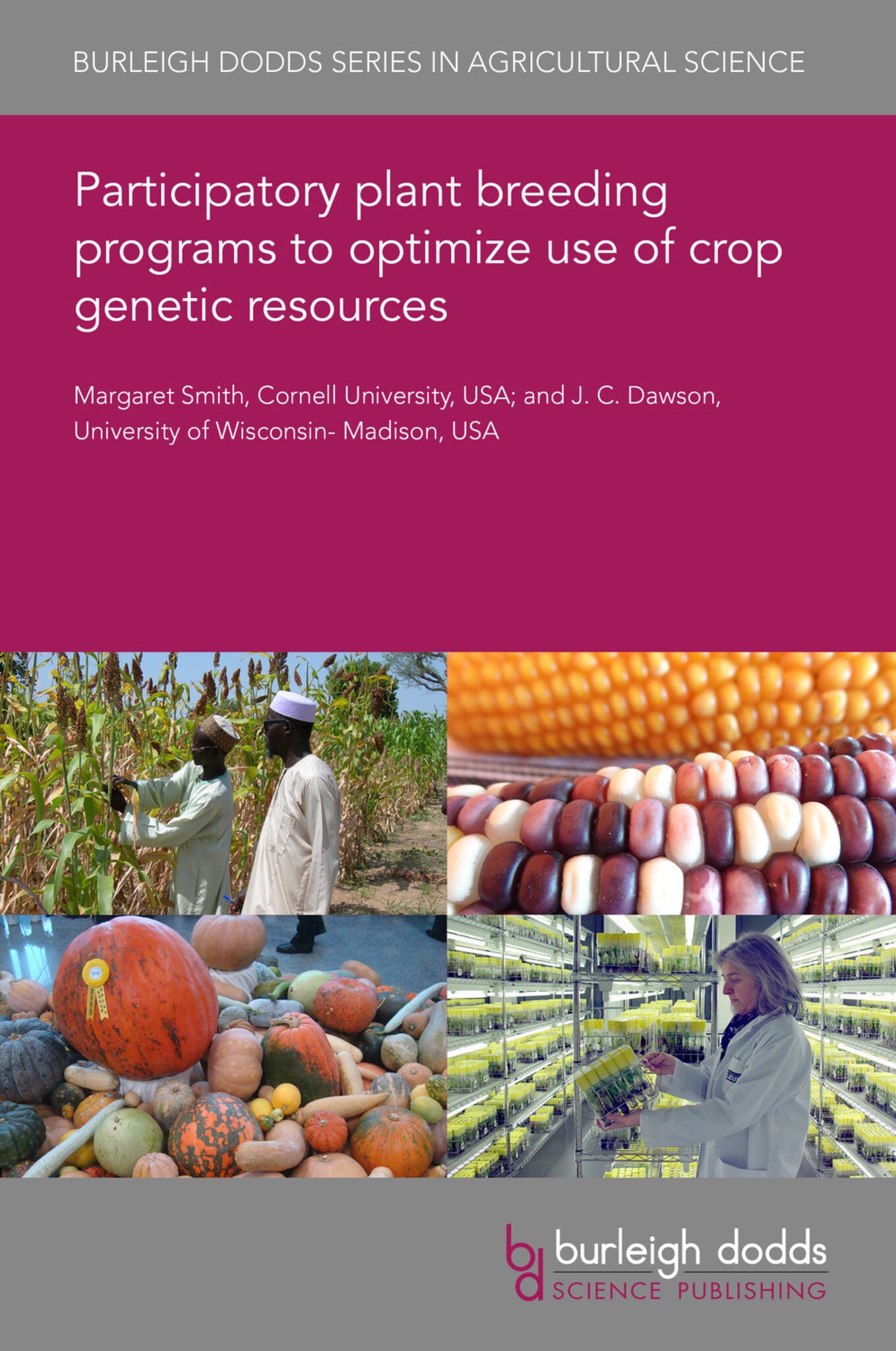We're sorry. An error has occurred
Please cancel or retry.
Participatory plant breeding programs to optimize use of crop genetic resources
Regular price
£25.00
Sale price
£25.00
Regular price
£0.00
Unit price
/
per
Sale
Sold out
Re-stocking soon
This chapter summarizes a sample of variety evaluation, experimental design, and breeding method innovations that have served as solid approaches for participatory plant breeding (PPB) efforts. Wit...
Read More

Some error occured while loading the Quick View. Please close the Quick View and try reloading the page.
Couldn't load pickup availability
- Format:
-
15 March 2021

This chapter summarizes a sample of variety evaluation, experimental design, and breeding method innovations that have served as solid approaches for participatory plant breeding (PPB) efforts. With success in PPB comes success in conservation at a local level of useful alleles and allele assemblages in the form of on-farm crop genetic resources. PPB programs of this sort have the potential to add value to local or traditional varieties that might otherwise be abandoned, thus promoting their in situ conservation. This chapter briefly touches on methodologies to assess farmers’ variety preferences. This is followed by sections that highlight some experimental designs for on-farm variety evaluation and farmer-participatory breeding methods for combining in-situ conservation with genetic improvement. Finally, some of the challenges that may limit genetic gain from PPB programs are noted – problems that increase the risk of wholesale replacement of on-farm genetic diversity rather than conservation through improvement.

Price: £25.00
Publisher: Burleigh Dodds Science Publishing
Imprint: Burleigh Dodds Science Publishing
Series: Burleigh Dodds Series in Agricultural Science
Publication Date:
15 March 2021
ISBN: 9781801461252
Format: eBook
BISACs:
TECHNOLOGY & ENGINEERING / Agriculture / Agronomy / Crop Science, Agronomy and crop production, TECHNOLOGY & ENGINEERING / Agriculture / Sustainable Agriculture, Sustainable agriculture, Agricultural science, Plant biology

1 Introduction 2 Methodologies to assess variety preference 3 Participatory plant breeding based on traditional/local varieties 4 Challenges and limitations 5 Summary 6 Where to look for further information 7 References



